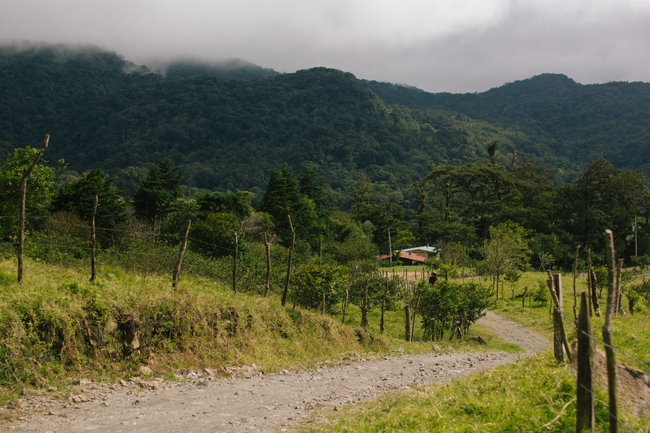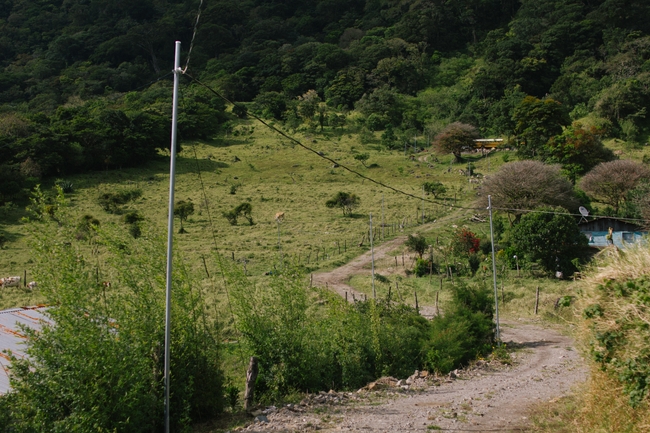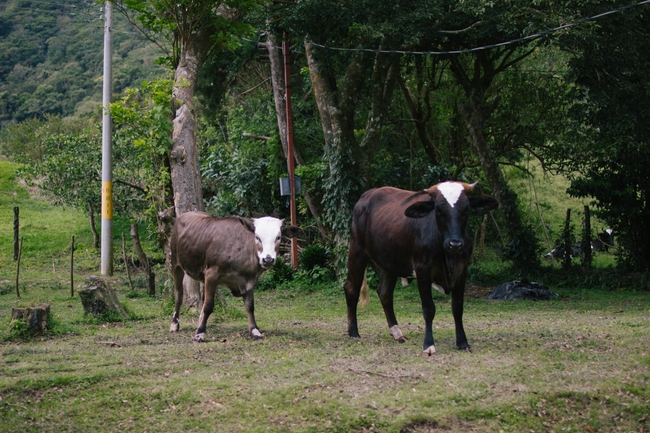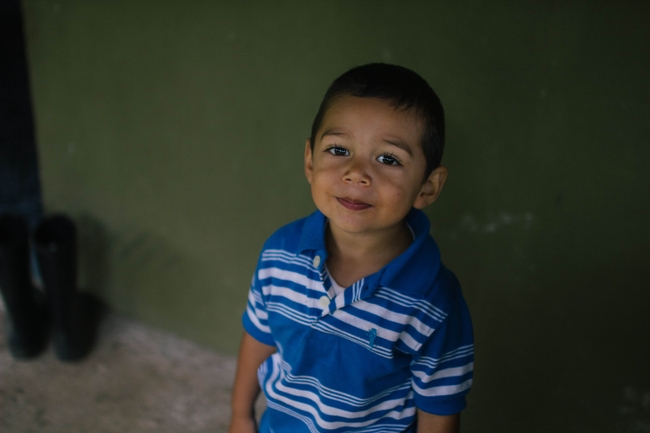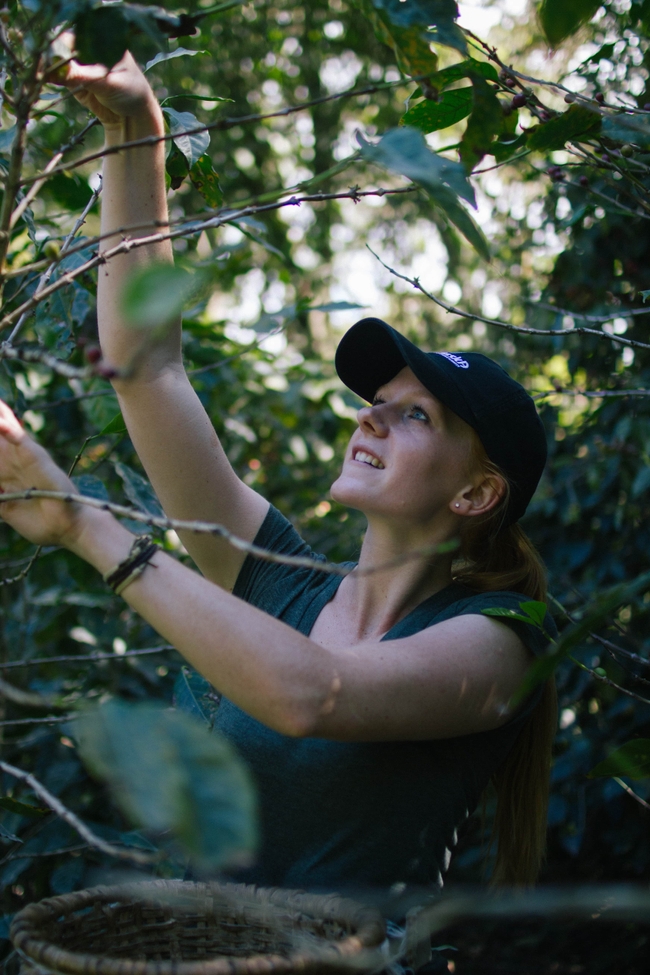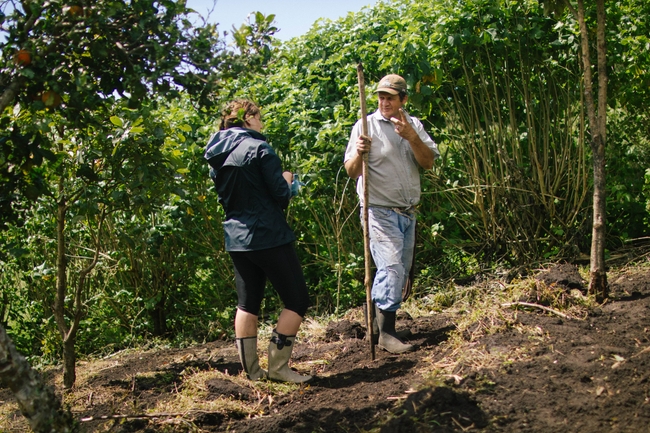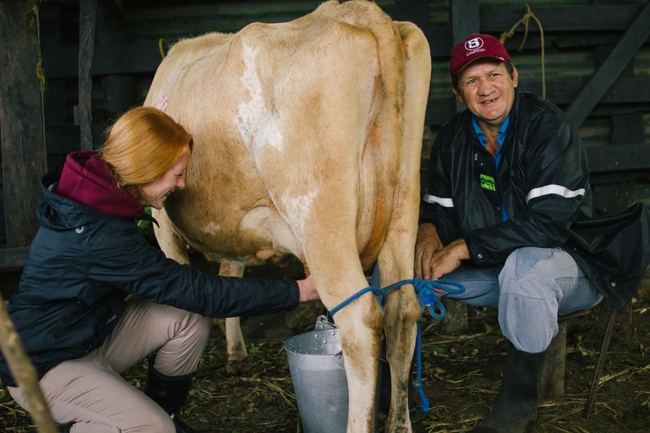Coffee Farming in Costa Rica
January 21, 2015 · 8 min read · travelSo here goes the blog post where I tell you about my experience living on a coffee farm in San Luis, Costa Rica. When I say I’m living on a coffee farm, this is what I mean…
Monteverde? Where is that?
Monteverde is a small town located in Puntarenas, located in the western side of Costa Rica. The bus ride was about 4 hours and 30 minutes from San José, although fifteen minutes of it can be attributed to the fact that we stopped by at a bus stop slash restaurant somewhere halfway. I’m actually fairly certain you could get to Monteverde from San José in under four hours if you drive there yourself, since the bus was pretty damn slow. If I had the money and was able to drive in Costa Rica, then maybe I would’ve driven here myself. But the fact is that I’m a poor college student, and thus, I need to resort to public transportation. Thankfully enough, the public transportation here in Costa Rica isn’t half bad. You can get to all of the major touristy places from San José using public transportation, even if it might take you some time. It’s also pretty cheap. During my first weekend in Costa Rica, I went to Puerto Viejo (a beach town on the Caribbean coast) and the bus ride was about USD 9 (one way). The bus ride from San José to Monteverde was even cheaper, at around USD 5.
We arrived at the bus station in Santa Elena (a town in Monteverde) just before 11am, and were picked up by a taxi driver and then taken to our host families. IVHQ’s Eco-Agriculture program takes place in San Luis, which is about a 20 minute drive from Santa Elena. Santa Elena is the touristy part of Monteverde, while San Luis is a small farm town nearby. In case you were wondering—no, it was not a 20 minute drive through a city with high-rise buildings. It was a 20 minute drive through farms and hills. So as you might be thinking, yes, we live on a coffee farm in the middle of nowhere. If you’re contemplating doing the Eco-Agriculture program, let me just say this: the program is perfect for people who love coffee, nature, mountains, hiking, and don’t mind being off the grid. Most of the host families here do not have Wi-Fi, so you won’t be able to communicate with your family and friends back home on a regular basis. The office of Finca la Bella, which is the name of the coffee farm we’re working with, does have Wi-Fi, so sometimes, after working in the morning, we’d come over and use the Wi-Fi over there. It’s not very fast (or reliable) though, so if you’re looking to watch YouTube videos or Netflix, you’d need to find a café downtown.
Where am I living?
A fellow volunteer—Kaitlin—and I are staying with Sylvia’s family in San Luis. Sylvia lives with her husband, Roy, and their two year-old son, Alejandro, in a cute little house.
On our first day, Sylvia was telling us about her family, and it turns out that most of her family also lives in San Luis. In fact, her parents live like 300m from our house, and they too have volunteers living with them! It was such a relief to know that we lived near other volunteers, because otherwise, we didn’t know how we would’ve been able to contact them! After volunteering in the morning, Kaitlin and I would often spend our afternoons hanging out with the other volunteers at their house.
What kind of volunteering do you get to do?
The kind of work that the Eco-Agriculture program entails varies depending on the time of the year, and even then, it differs slightly from day to day, depending on what needs to be done. It is currently coffee harvesting season here in Costa Rica, so yes, we have been picking a lot of coffee berries. On our first workday, which was Wednesday, we started off by picking coffee berries (los amarillos y rojos son buenos, said William), and then ended with clearing weed from baby coffee plants. The act of picking coffee berries might not sound very daunting, but mind you, it’s not as easy as you think. The hard part is trying not to fall or slip or slide while picking berries. Some of the coffee trees are planted on slanted land, and moreover, we have to hike for at least a mile, with super strong wind blowing into our faces. The wind here is so strong that I’m surprised Sylvia’s cat doesn’t fly away, because at times, I feel like I’m about to fly.
Other times, we’ll do different things though. For instance, on Friday, we helped till the soil so that they’d be ready for new plants, and on Tuesday, we planted some frijoles.
The length of work also varies from day to day—sometimes only two hours, sometimes four to five hours. Even if we only work for two hours though, we end the day feeling really accomplished, because when you work on a farm, you can really see what you’ve done. What I mean is, when you work with children at an orphanage, there isn’t a lot of change you can physically see, but when you work on a farm, at the end of the day, you can see that you cleared the weeds, or tilled the soil, or that all the coffee plants have been cleared of berries.
What is there to do besides volunteer work?
Despite there not being many things to do in San Luis, (that is, unless you consider relaxing, playing with the dogs, farming and a little bit of hiking to be extremely exciting), Santa Elena is a very exciting place. Tons of tourists flock to Santa Elena each year to visit the wonderful Monteverde Cloud Forest, Butterfly Garden, Bat Jungle, and many more. In fact, the streets are lined with lodges, inns and hostels. There are also zip-lining, bungee jumping, rappelling, horseback riding, as well as canyoning opportunities. Monteverde is in fact known for these attractions, and Monteverde is actually the best place to go zip-lining in Latin America. I myself went zip-lining with Extremo and I can definitely say that it was one hell of an adventure (not that I can compare it to other zip-lining experiences, since it was my first time)! I paid USD 50 dollars which included about 14 different cables. They were mostly zip-lines, but there was also a Tarzan swing, and two superman zips. It was a lot of fun. Lauren, Kaitlin and I also went canyoning yesterday, which was super fun. Canyoning is basically rappelling, except that you do it down a waterfall. I am very proud to say that we rappelled down a 40m (131 for you Americans) waterfall, although I am also slightly ashamed to say that my right shoe fell off a fourth of the way there.
All in all, I have had an amazing experience staying in San Luis. I am definitely more of a city person, and I can’t really imagine myself living in San Luis, or any coffee farm for that matter, for an extended period of time. However, the time I spent in San Luis with Sylvia and her family has proved to be very refreshing. I am so thankful for Sylvia and her family for welcoming me into their home. I wish I had been able to speak more Spanish, as that would have allowed me to forge a closer bond with my host family. However, I do feel like my Spanish has gotten better. For someone that never took any formal lessons, and only learn Spanish through Duolingo, I’m actually quite proud with my Spanish speaking ability—at least I can voice my basic needs, wants and feelings.
The past four weeks has also definitely been quite tiring. We’ve walked back from Santa Elena to San Luis twice…and it’s a 12km walk. We also walked around for three hours in the Cloud Forest, and then walked about 4km from the Cloud Forest to a lodge, just so that we could get Wi-Fi, and get a taxi back home. Just walking from our house to where the actual coffee plants are is also very tiring. Flat land does not exist in San Luis. I can’t wait to have some time for myself to just sleep and watch Netflix. I can’t wait to be back home soon!
Hasta luego amigos,
Indira
PS: Check out my Flickr page for more photos of Costa Rica!
